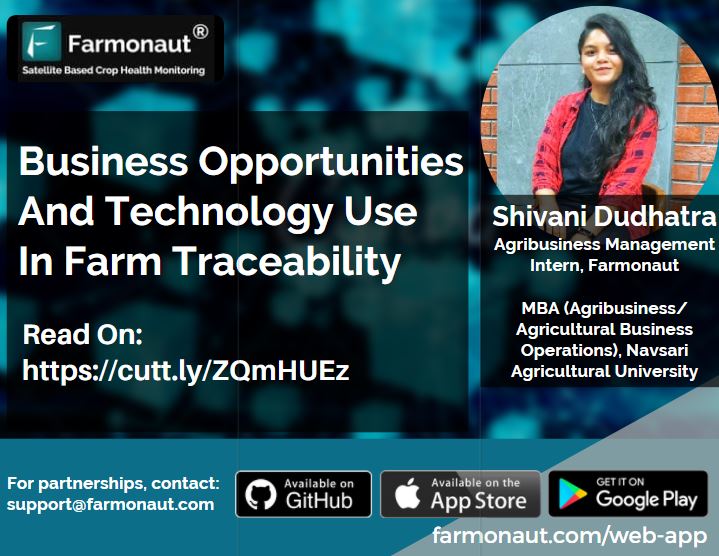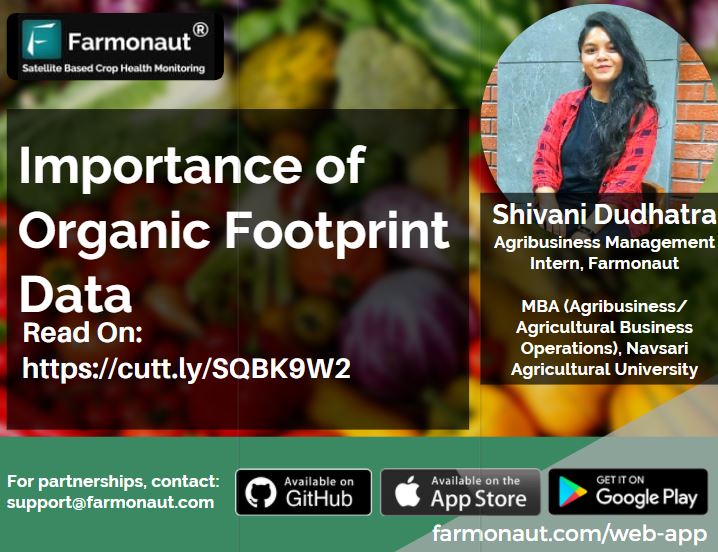IMPORTANCE OF ORGANIC CARBON
Introduction

1.1 Footprint data
Data are of different types, which gives information on particular thing or according to the requirement. When the data being searched or distribute with or without intention, that data is stored using internet. The past or present data are the foot print data. A data footprint can include some or all of the actions left on the web and on devices in the digital footprint, but it also includes internal systems, servers, and cloud computing services.
1.2 Organic Farming:
Evolution of different farming practices over the years have diverted farming towards usage of chemicals and synthetic products. This usage leads to degradation of soil, lowers quality of soil, decreases yield and production of crops, etc. Hence, to overcome such issues faced modern organic farming was introduced to fix the damage caused by use of chemical pesticides and synthetic fertilizers. “Organic farming is all about an agricultural system that uses ecologically based pest controls and biological fertilizers which are derived from plants and animal wastes.”
Organic farming is far deeper concept than just non-chemicalization. According to IFOAM, “Organic agriculture is a production system that sustains the health of soils, ecosystems and people”.
- 2.1 Advantages of Organic farming in India.
- Organic farming in India is very economical, it uses no expensive fertilizers, pesticides, HYV seeds for plantation of crops. It has no expenses.
- With the use of cheaper and local inputs, a farmer can earn a good return on investment. This is one of the most important benefits of organic farming in India.
- There is a huge demand for organic products in India and worldwide and can earn more income through exports
- Organic products are more nutritional, tasty, and good for health to chemical and fertilizer utilized products.
- Organic farming in India is very environment friendly, it does not use fertilizers and chemicals.
1.2.2 Challenges faced by Organic farmers:
A. Soil issues
Being the 20th century, farmers haven’t continued to use the organic way of farming since ancient times. Due to which soil quality has degraded and usage of chemical products are increasing which make soil quality even worse. Switching to organic farming will help in gaining the quality of soil. Soil quality retention would take few years to get back to its original quality.
B. Non achievement of expected quality and yield.
Modern farmers switching farming practices from regular to organic faces quality issues. Organic farming gives better quality after few years due to soil being recovered from excess use the chemicals. Farmers think that organic cultivation will result in lesser yield when compared to conventional. Which is true for initial few years. Hence, quality and yield of organic crops is major issue that concerns farmers.
C. Failure of organic pest management
Chemical pesticides are instantly effective on crops and gives result in no time. Where as organic pest management practices take time and, in some cases, could result in failure too due to excessive or minimal use of organic pesticides. Farmers must know all the details regarding the organic operations in order to manage and get better results.
D. Inability to meet export demand
Demand for organic products is high in foreign countries mainly developed countries. Organic products are preferred due to its characteristics of being healthy and having no side effects or health issues on consuming. For which export of organic product from India is in huge demand. Export of organic products must meet certain requirement and pass the certification in order to meet the health requirements.
E. Time
Farmers and his crops require interaction for observation. In case of conventional farming farmer solely can handle large acres of land. Organic crops require constant watch on crops hence it is difficult for sole farmer to carry out organic farming in large acres of land.
Introduction: Farm Traceability
Traceability can be said as the follow up on the movement of activities taking place. In case of any product, the ability to follow up on the movement of food through the stages of production, processing and distribution. Tracing plays an important role in helping businesses in the competitive era of domestic as well as globally. Today’s agribusiness and food have utmost importance of accurate and timely traceability of products and activities. Customers do expect to know about the product at every step to make sure if they meet the requirements and expectations. Traceability is the only tool by which expectations of buyers could be meet.
Farm traceability can be said as a system in which fruits, vegetables or any food product can be traced from the field to the buyer by unique code.
The unique code used can be any combination of numbers, letters and colour. The code assigned should have certain facts attached with it. The codes can also be in the form of barcode.
TITLE: “BUSINESS OPPORTUNITIES AND TECHNOLOGY USE IN FARMTRACEABILITY”
Objective:
- To analyse importance of blockchain in farm traceability
- To know other technologies used for farm traceability
- To study business opportunities in farm traceability
Objective 1: To analyse importance of blockchain in farm traceability.
Blockchain system is set of linked chain that is responsible for storing auditable data in blocks/units. Blockchain is also called as internet of value because it is safer to store and transact value from one system to another. Blockchain can be easily understood as similar to Google spreadsheet that accepts contribution of multiple author due to locking mechanism.
In agriculture the blockchain technology can be used in may different ways in order to benefit farmers and consumers. Contributing all the benefits under 3 categories, blockchain can be used in following ways:
1) Crop and Food production
Blockchain when coupled with IoT can help farmers in sustainable farm practices and help optimize the farm resources like water, labour and fertilizers. The below flow chart could give you better understanding how the blockchain emerge with IOT could work.
a. Data collection:
The data collected in agriculture are important for farmers to increase quality, productivity and yield of the crop. Data can be of different kinds and can be collected any number of times. Dividing the valuable data that would be required can be categorised as follows:

b. Data processing
Having data and utilizing them in correct way is important. Understanding the data is only possible if it is in correct format or structured manner. Hence, the data must be structured according to the relevant things like timestamp, demography or type. The process data can be used in Crop quality recommendations, Crop demand prediction, Crop identification, Crop yield Prediction, etc.
c. Saving data in blockchain
The data is then to be stored in blockchain which can be distributed across every stage of the network. Since the information will be available to all agriculture market related people, it will be easier to maintain efficiency in crop and food production.
2) Food Supply chain management
The food produce is traced from the beginning of cultivation stages till it reaches the end consumer. In food industry the blockchain is used to monitor the supply chain management. Its benefit is that it is open source and allows others to add their views.
Produce being sent to the consumer after passing at various stages need safety in the quality. The supply chain can be of different duration from 1 day to 1 month and even more than that in case of usage of road transport or export purposes. To ensure that edible supplies reach the consumer with safe to eat quality is prime duty of companies. Hence, blockchain having multiple usage can be used in supply chain to ensure the safety of food or produce. Following shows how it can be used:

Conventional farming has caused various environmental impact due to use of toxic or harmful agricultural activities. To overcome the environmental impact cased it is necessary to know which factor has caused it more.
Emission of various Greenhouse gases from different agriculture is over million tonnes. As per INCCA, 2010 report, Total emission of GHG was 334.41 million tonnes which included Livestock, Manure management, rice cultivation, soils and burning of crop residue. However, Livestock, rice cultivation and soils incorporated major GHG emission around 95% of total emission.
- Carbon footprint:
Carbon footprint is the measure of the total amount of Carbon dioxide emission that is directly and indirectly caused by an activity over the life stages of product. Life cycle assessment (LCA) is tool to produce complete picture of inputs and outputs in carbon footprint. In food chain, at all stages GHG emission takes place, from its farming to manufacturing, distribution, food preparation and waste disposal.
2.1.1 Sources of GHGs emission from agriculture:
With reference to C emissions, agricultural practices may be grouped into primary, secondary and tertiary sources (Lal, 2004).
- Primary sources of C emissions are due to mobile operations (e.g., tillage, sowing, harvesting and transport), stationary operations (e.g., pumping water, grain drying) and direct emission from soil.
- Secondary sources of C emission comprise manufacturing, packaging and storing fertilizers and pesticides.
- Tertiary sources of C emission include acquisition of raw materials and fabrication of equipment and farm buildings, etc.
- Nitrogen footprint
A nitrogen footprint is the amount of reactive nitrogen released to the environment as a result of an entity’s resource consumption. In case of farming the resource consumed are the various inputs used for cultivation of particular crop. Nitrogen footprint helps minimizing the negative effect caused on human health and environment. In case of food production, footprint data helps in optimizing the role of nitrogen.
We will keep posting about any such informative information on to our blogs, to help as many people as possible. Farmonaut is built upon a vision to bridge the technological gap between farmers and strives to bring state-of-the-art technologies in the hands of each and every farmer. For any queries/suggestions, please contact us at [email protected].
We have some more interesting articles coming up soon. Stay tuned!
Wait!!
Before that…
Follow us at:
Facebook: https://facebook.com/farmonaut
Instagram: https://instagram.com/farmonaut
Twitter: https://twitter.com/farmonaut
LinkedIn: https://www.linkedin.com/company/farmonaut/
Pinterest: https://in.pinterest.com/farmonaut/
Tumblr: https://farmonaut.tumblr.com/
Youtube: https://www.youtube.com/channel/UCYWOOPPKATLgh4L6YRlYFOQ
AppLink: https://play.google.com/store/apps/details?id=com.farmonaut.android
Website: https://farmonaut.com
Satellite Imagery: https://farmonaut.com/satellite-imagery
Satellite Imagery Samples: https://farmonaut.com/satellite-imagery-samples


